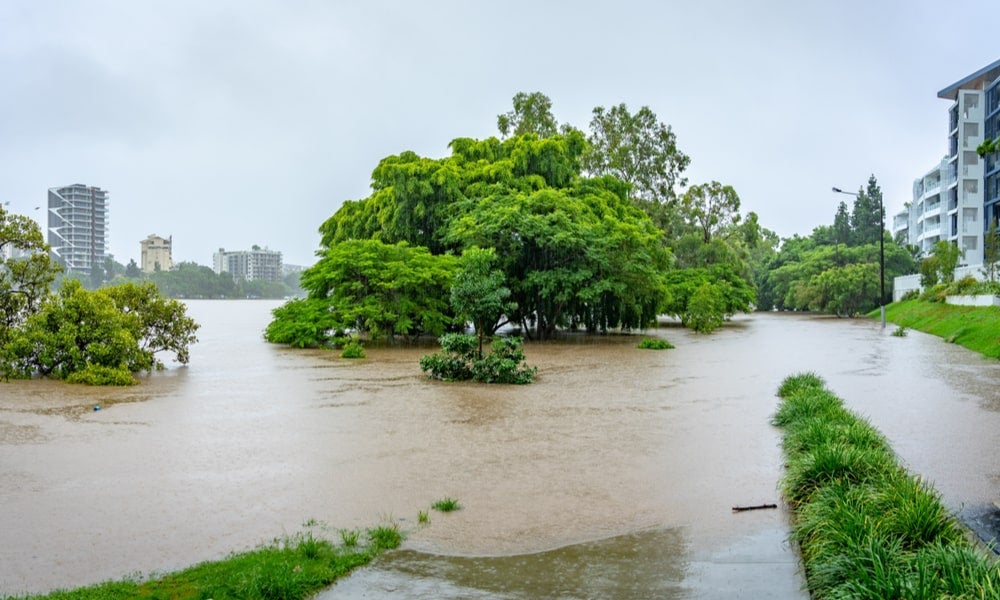How will businesses be affected by rising insurance premiums?
A number of factors are impacting premiums and these have important implications for insurance companies and businesses, writes UNSW Business School’s Michael Sherris
The main types of insurance for individuals include home and contents, car (comprehensive or third party), life and private health insurance. Businesses also purchase insurance for a range of risks including liability and business interruption and property and assets. Farmers also use crop insurance.
All these insurances are exposed to the impact of inflation, climate change (bushfires, storms and floods) as well as business interruptions such as pandemics – as we have recently experienced. The important feature of inflation and climate change is that these are largely systematic risks that impact individuals and businesses with insurance to a greater or lesser extent. They cannot be diversified in an insurer’s portfolio of risks so that annual premiums will increase; it’s just a matter of how much, and when.

What impact will increased premiums have?
Some insurances are affected more than others, as are individuals and businesses. For example, flood and storm risks impact properties located in flood-prone areas and subsequent cost of claims. Although we are experiencing increased floods and bushfires in recent years, climate change impacts are long-term and will be mitigated to some extent by how well we are able to control temperature increases and emissions reductions. In contrast, inflation is something that impacts cost of insurance regularly. This is likely to have a greater impact over coming years, and will be amplified by the fallout from the pandemic.
The pandemic saw a massive injection of money into the financial system, and this exacerbates inflation arising from supply and other factors impacting insurance costs related to replacement car parts and building materials. For some types of insurance, however, the pandemic saw reduced risks. For car insurance policies, many individuals were driving less, and for health insurance, many individuals were deferring health treatments which should have reduced premium rates.
With the impacts of long-COVID yet to be seen, there will be impacts on health and life insurance premiums and related product disclosure statements in the future. Short-term, we have seen significantly increased mortality from COVID and its impact on other causes of death.
Read more: How resilient is the insurance industry against climate change?
Impacts on the insurance industry
The insurance industry regularly reviews the premium rating of all its insurance types and factors in expected inflation and, increasingly, the potential impact of climate change. The rating of risks is becoming more refined so that for home and contents, for example, the actual address is a major factor in determining annual premium costs.
As a result, the recent flood events and bushfires have resulted in very significant increases in flood coverage for those properties experiencing significant flood risk. The increase in premiums will also lead to an increase in underinsurance, which is already a concern.
Finding ways to spread these systematic risks to share the impact on premiums across a wider range of policyholders is one way to make insurance more affordable for those individuals facing the highest premium increases. The Australian Reinsurance Pool Corporation and the recently established government reinsurance pool for cyclones and related flood damage are one way that these costs are being managed.

Insurance industry challenges
These are all issues the insurance industry is currently facing. They add to the uncertainty that insurers must manage which has to be funded from premiums, through higher premium rates or shareholder capital, through lower profits and returns. They will also impact reinsurance prices that insurers must pay to manage their aggregate risks, as they not only impact Australia and there are international pressures on the general insurance industry more broadly.
They place a renewed emphasis on capital and solvency for insurers. APRA undertook stress tests of Australian insurers following COVID, and found they are well positioned to meet commitments to policyholders and minimum capital requirements.
Future-proofing the insurance industry
The insurance industry manages these shocks through internal risk management and an extensive regulatory framework that focuses on both meeting policyholder obligations as well as their ability to meet and respond to a wide range of shocks (not just a pandemic). Government initiatives such as the reinsurance pool also assist the industry in managing the impact of such shocks.
Although it’s impossible to predict these events, it is possible to stress test insurers for a range of events of differing severity and impact as well as ensuring they can implement management actions such as capital raising and premium re-ratings.
Read more: Pricing fairness: tackling big data and COVID-19 insurance discrimination
How consumers are responding
Increased insurance premiums will add to the financial pressures that many households in Australia are facing as a result of interest rate hikes, food price inflation and energy cost increases. They will have to make decisions about insurance coverage and how much risk to take for different types of insurance and an adequate level of cover.
For many, they will be able to increase the deductible to reduce the cost of insurance. For car insurance, if they are driving fewer miles, they can switch to an insurer or a policy that charges premiums based on mileage. Ideally, they should review the coverage of all their insurances regularly. When renewing insurances, they should seek several quotes. They may very well find that moving to another insurer will produce a lower premium as their previous insurer, which might have held their policy for several years, may increase rates significantly (bearing in mind their claims history).
All these pressures are likely to increase the amount of underinsurance in Australia, since a higher price for a good or service usually leads to lower demand. For insurance, reduced demand comes from decreasing coverage or not purchasing insurance at all.

Minimising costs and improving affordability
It’s important to consider the cost of coverage and how much risk the individual can finance from savings. For large risks, coverage is important but costs can be reduced through a deductible at a level that can be managed.
Premiums can vary substantially across insurers. When shopping around for quotes, have a close look at policy terms to avoid paying for coverage that is not needed. Although there are very few mutual insurers in Australia, they can sometimes provide a better deal than for-profit insurers since they may not load the premium for profits and returns to shareholders.
Factoring in systematic shocks
Systematic shocks to insurance are the most challenging ones for both individuals and insurers. Unfortunately, individuals purchasing insurance will have to pay for the impact of these shocks. It’s also important that the insurers can absorb the impact of these shocks in a way that they can meet their obligations to individuals who submit claims as a result of shocks such as catastrophic events.
Subscribe to BusinessThink for the latest research, analysis and insights from UNSW Business School
Climate change is a slower-moving (but still uncertain) risk with impacts that are being quantified, and climate change will also vary depending on the geographical location of the risk.
Inflation will also vary in its impact. Although predictable to some extent (and subject to attempts to control its level by central banks), it is still uncertain, with different impacts in different regions and for different types of policies. Home insurance costs reflect rebuilding and material costs in the locality of the property, and these can differ by region also. Although we say there is nothing more certain than death and taxes (including GST), we can probably add to that list systematic shocks in insurance.
Cost-benefits of 'Medicare-style' minimum insurance cover
The government has introduced the reinsurance pool for cyclones and floods to be administered through the Australian Reinsurance Pool Corporation, which is a way of assisting insurers in providing coverage for climate and other catastrophic risks. Having a separate levy system to fund a minimum level of insurance coverage for bushfire, flood and other climate risks is a possibility – although likely to be challenging in the current environment. Traditionally these risks are covered by private market insurance and government support at a basic level in the event of a catastrophic event.
Michael Sherris is a CEPAR Chief Investigator, Director of Industry Engagement, and a part-time Professor of Actuarial Studies at UNSW Business School. His research sits at the intersection of actuarial science and financial economics and has attracted several international and Australian best paper awards. For more information, please contact Prof. Sherris directly.
